„Roma 275“
Jan 24 – April 14, 2020
for text by Moritz Scheper scroll downwards
Installation Views:
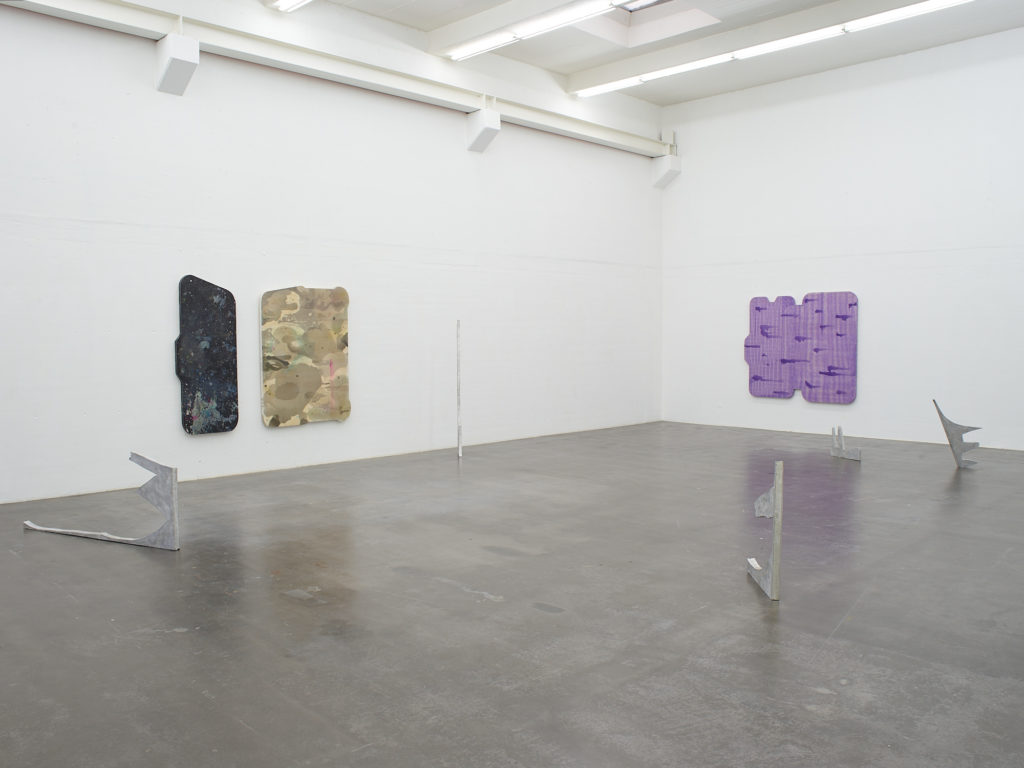

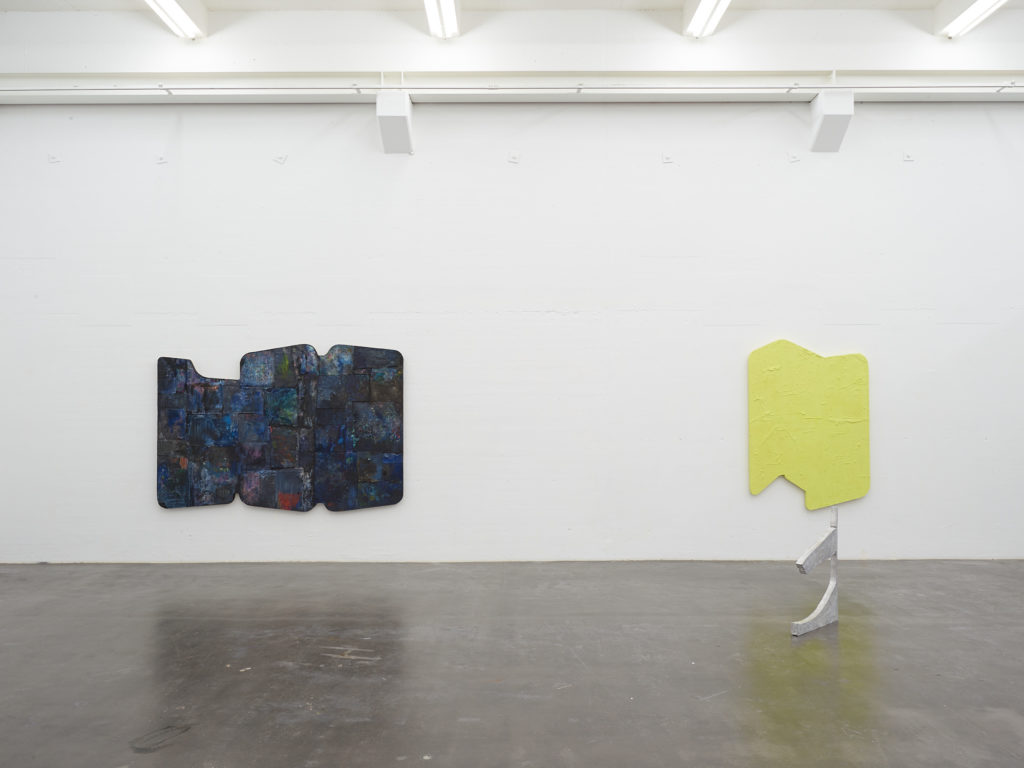

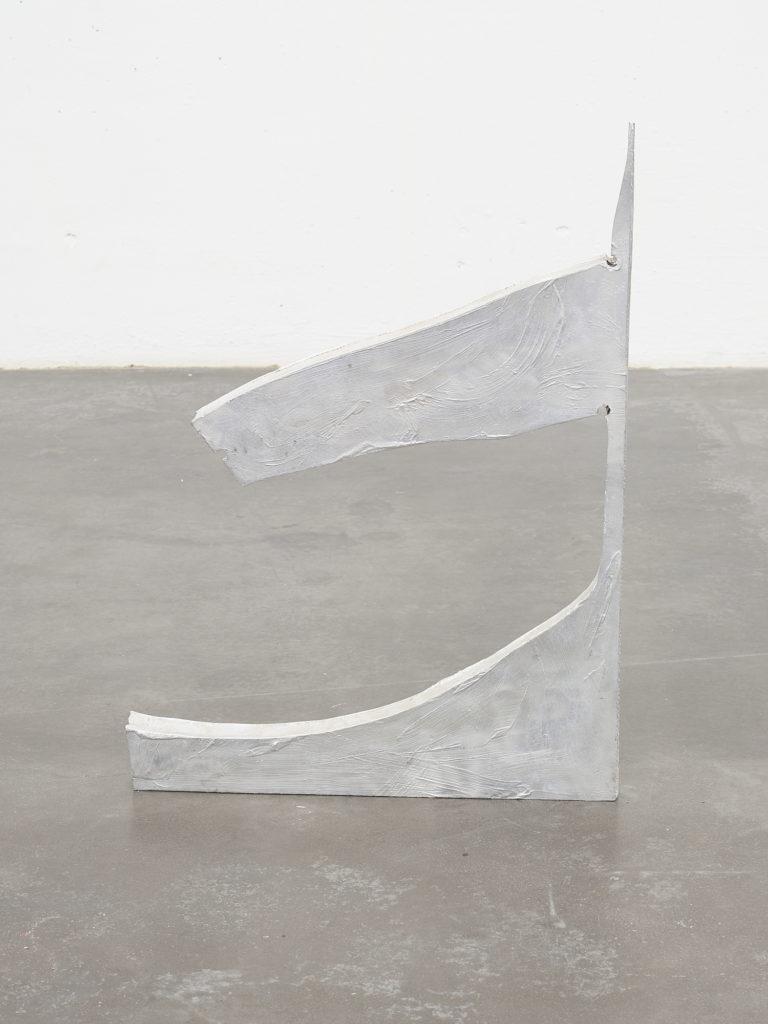

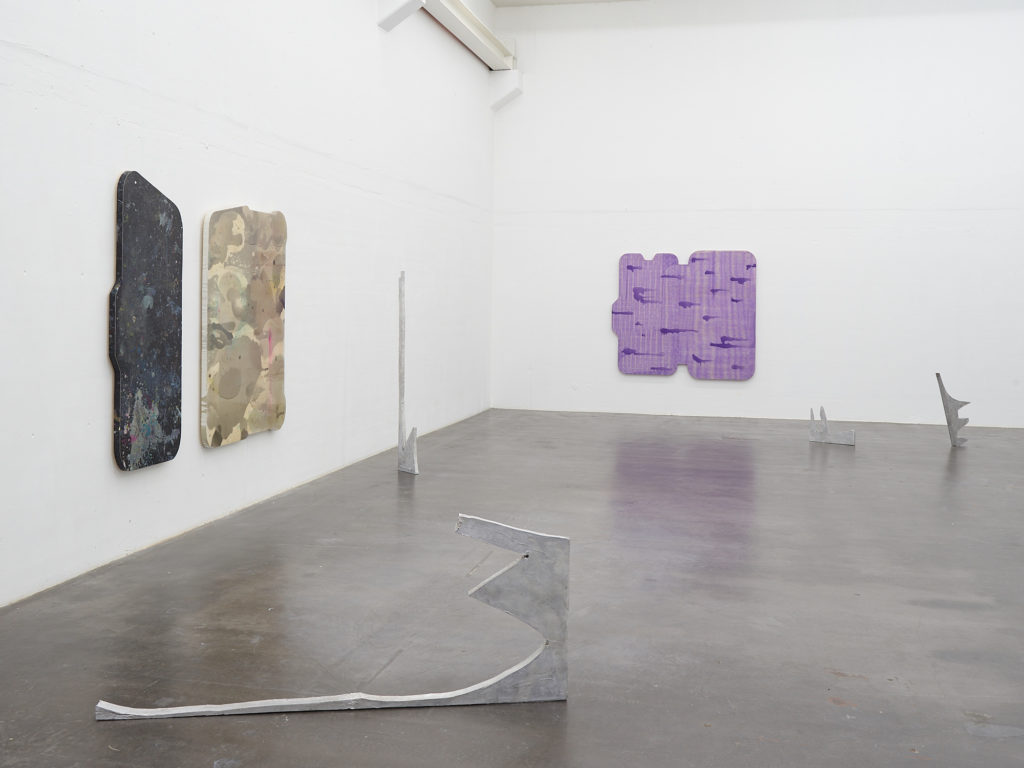
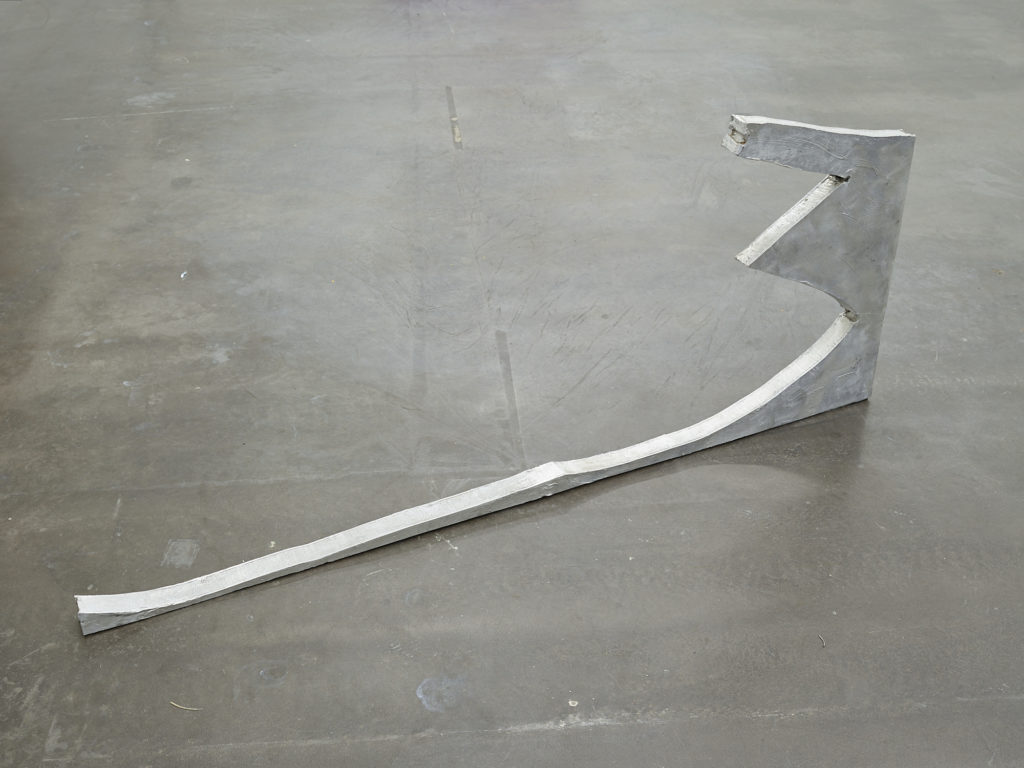
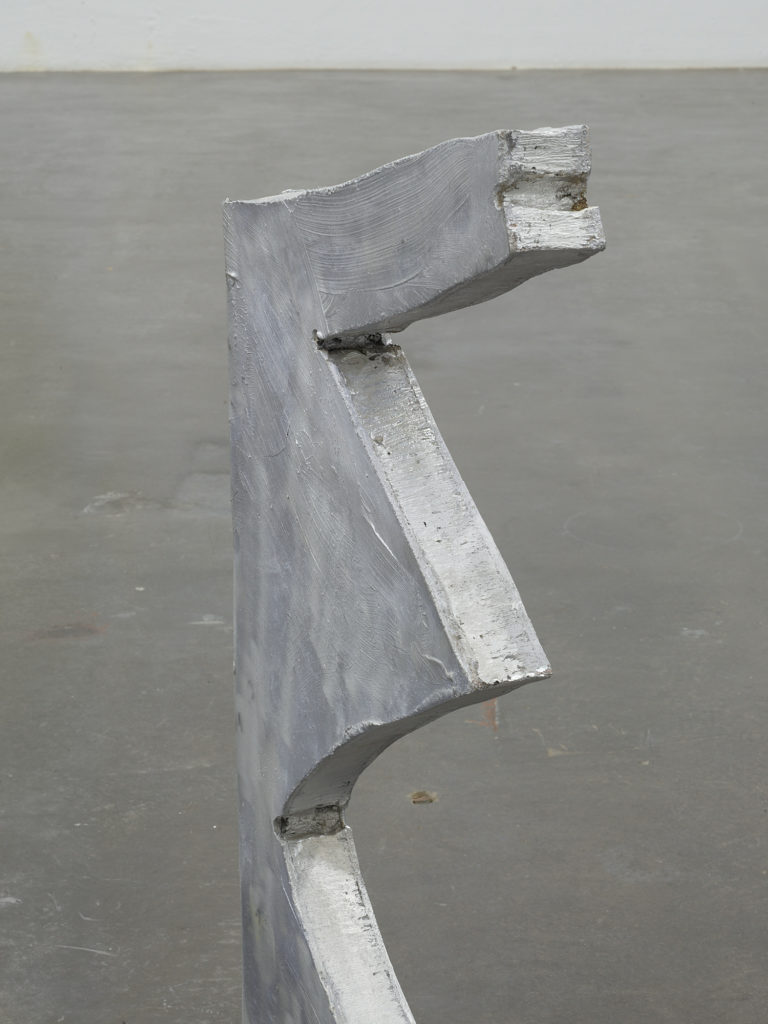
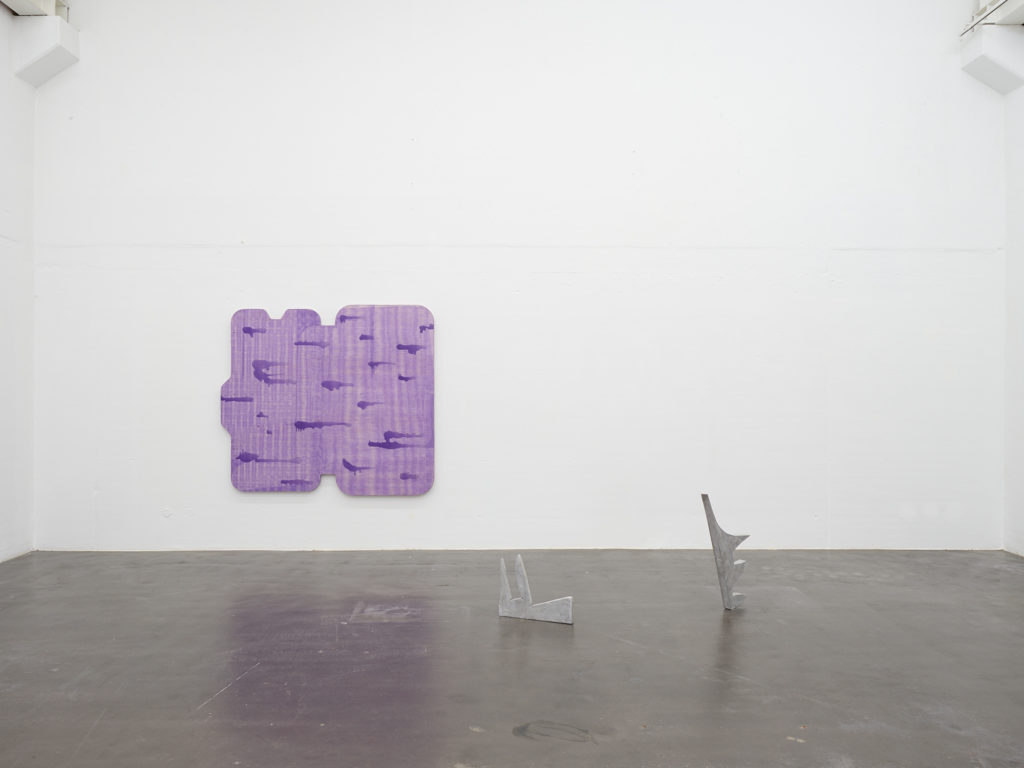
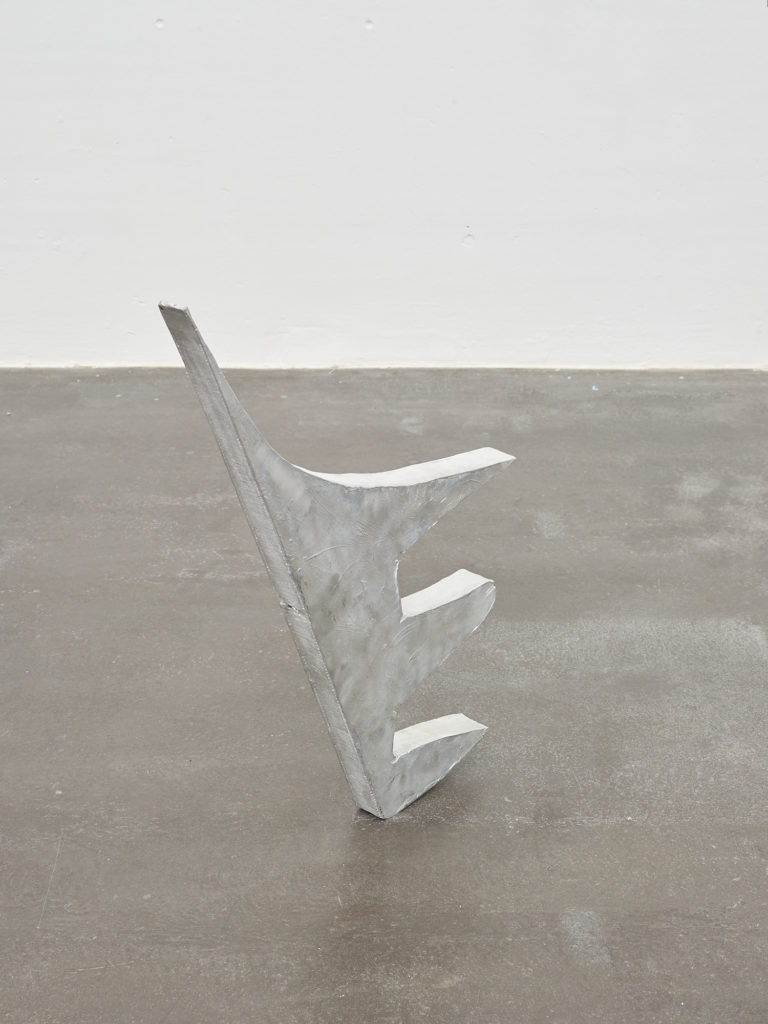
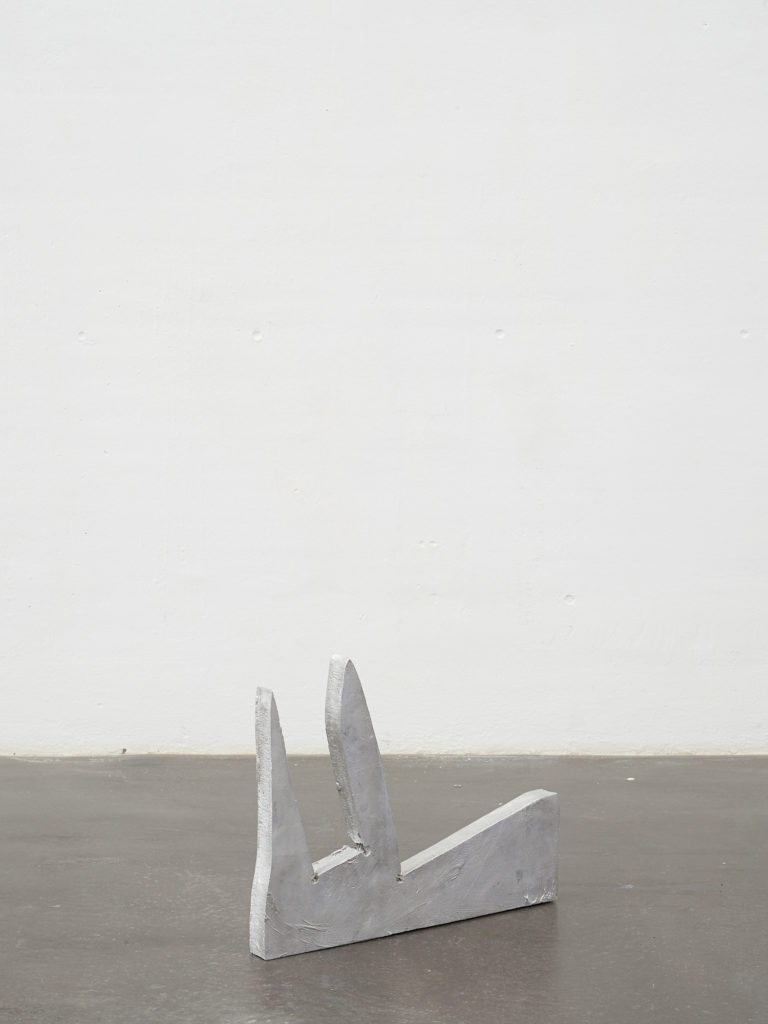
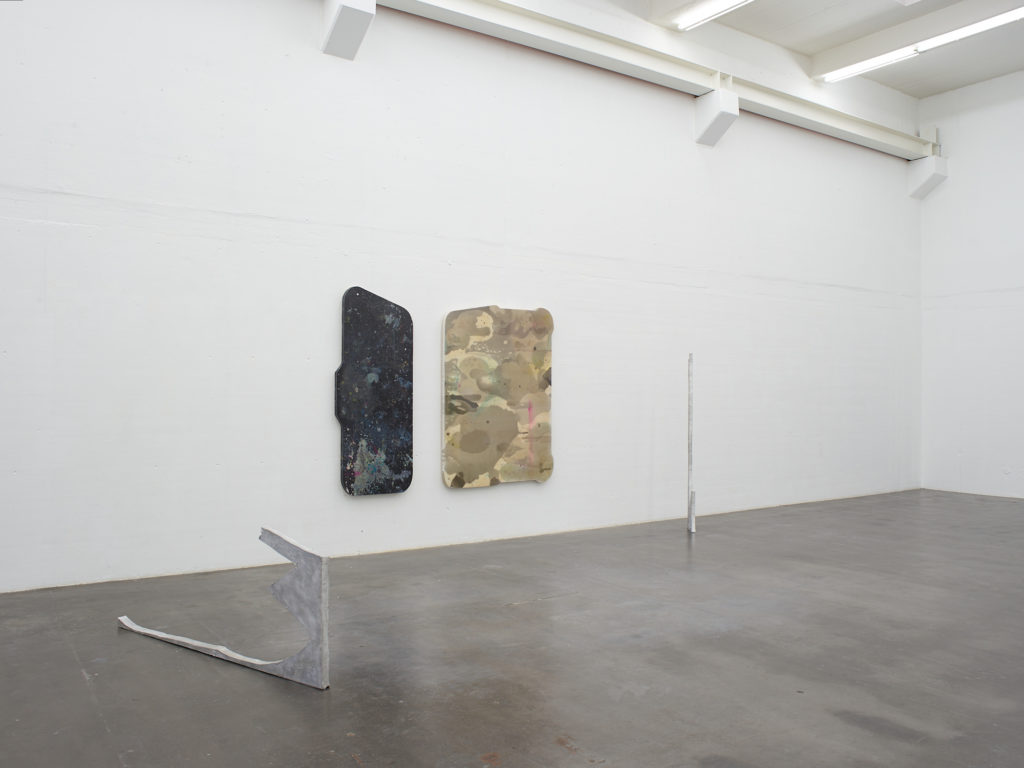
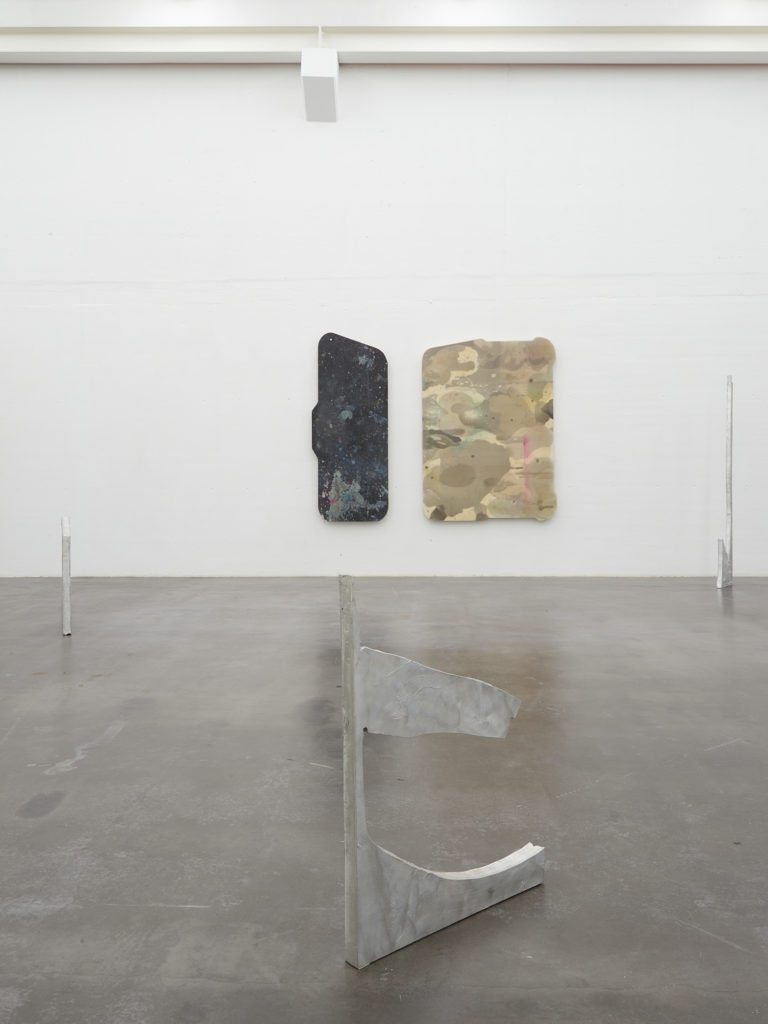
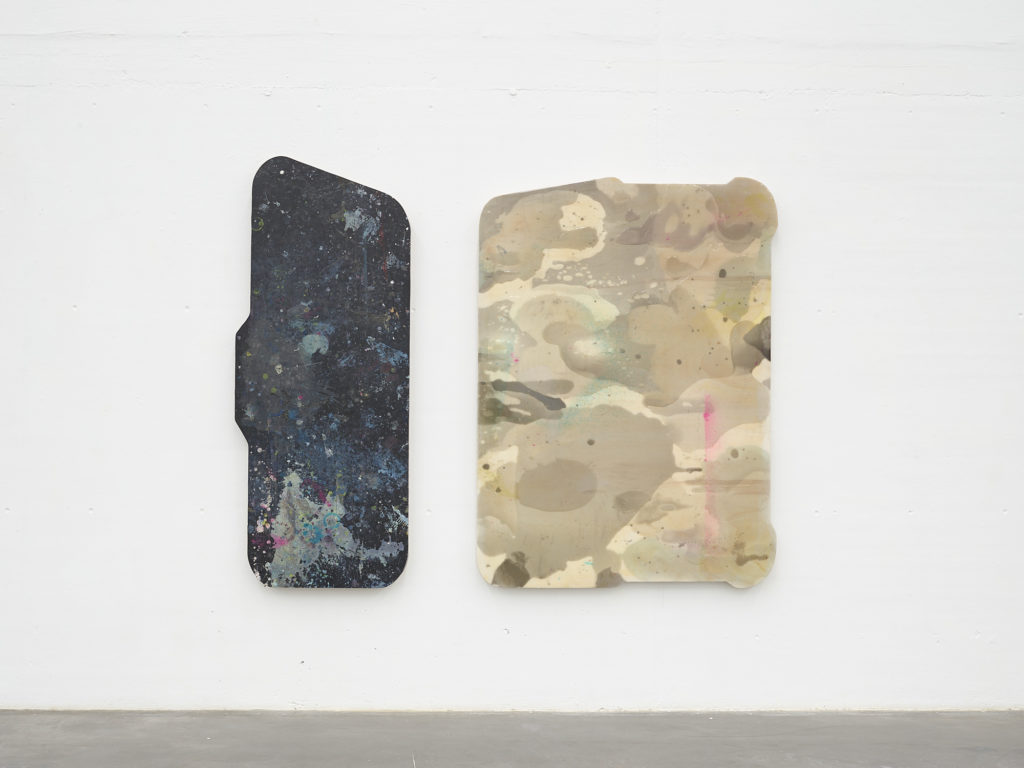

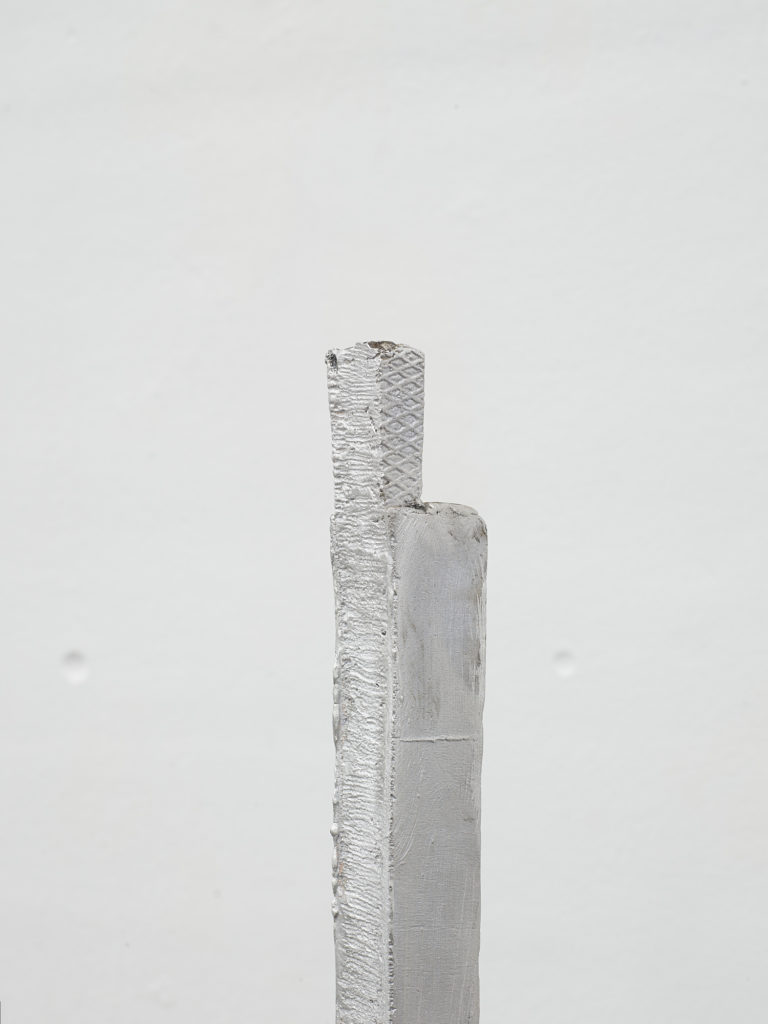
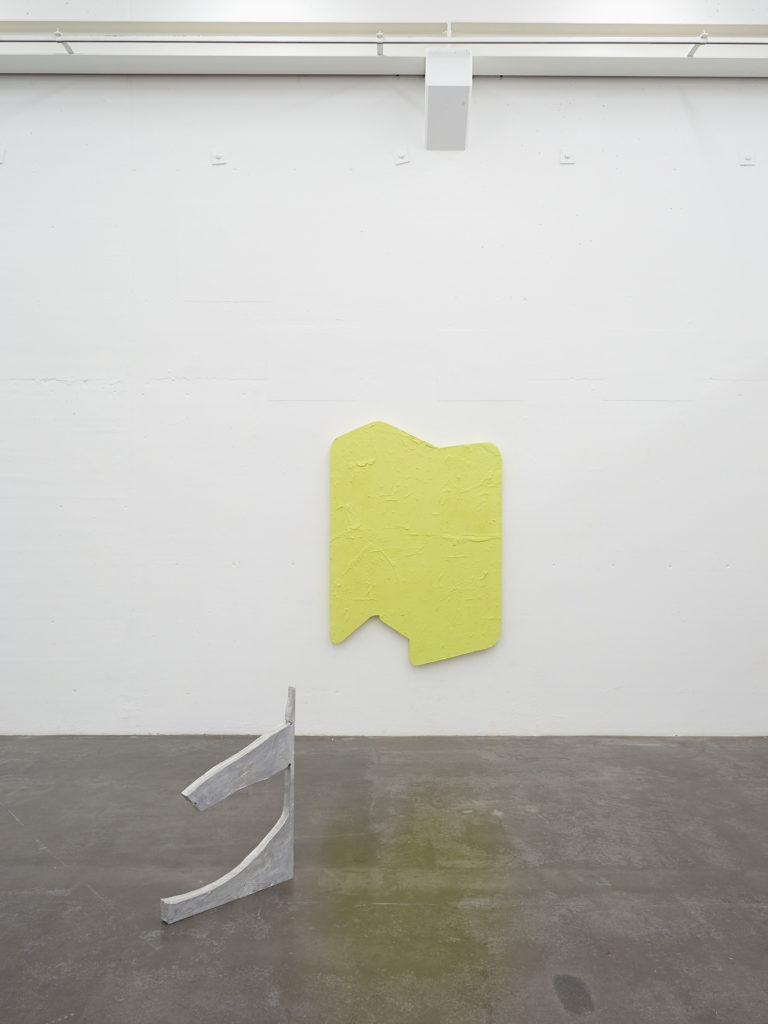
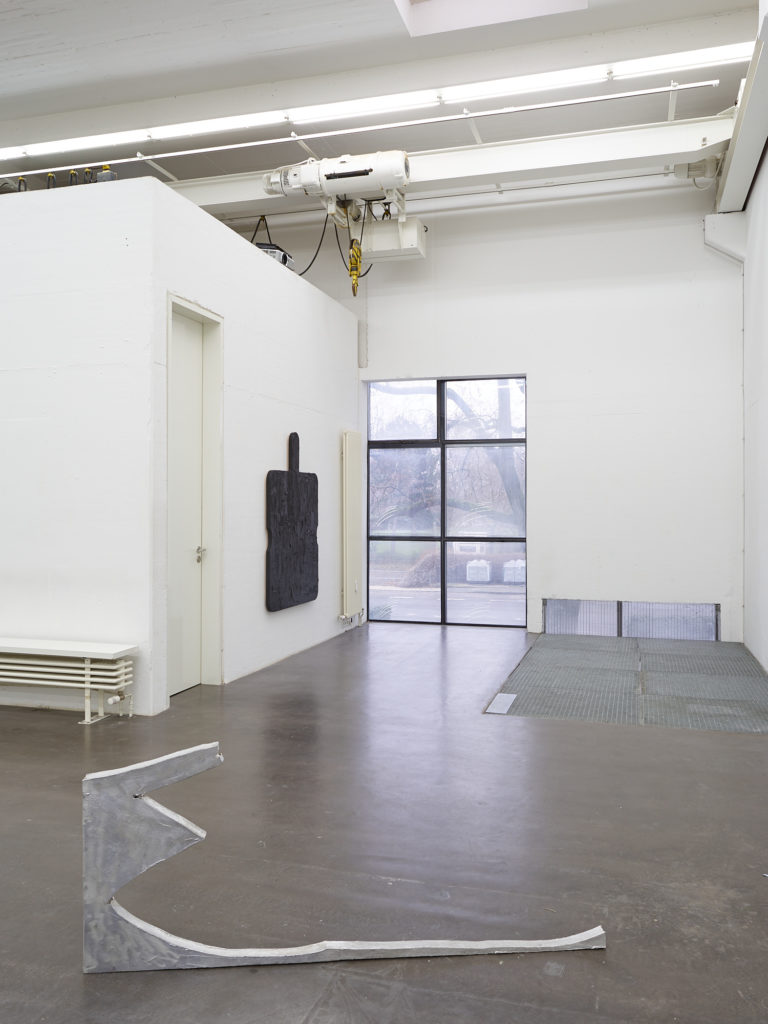

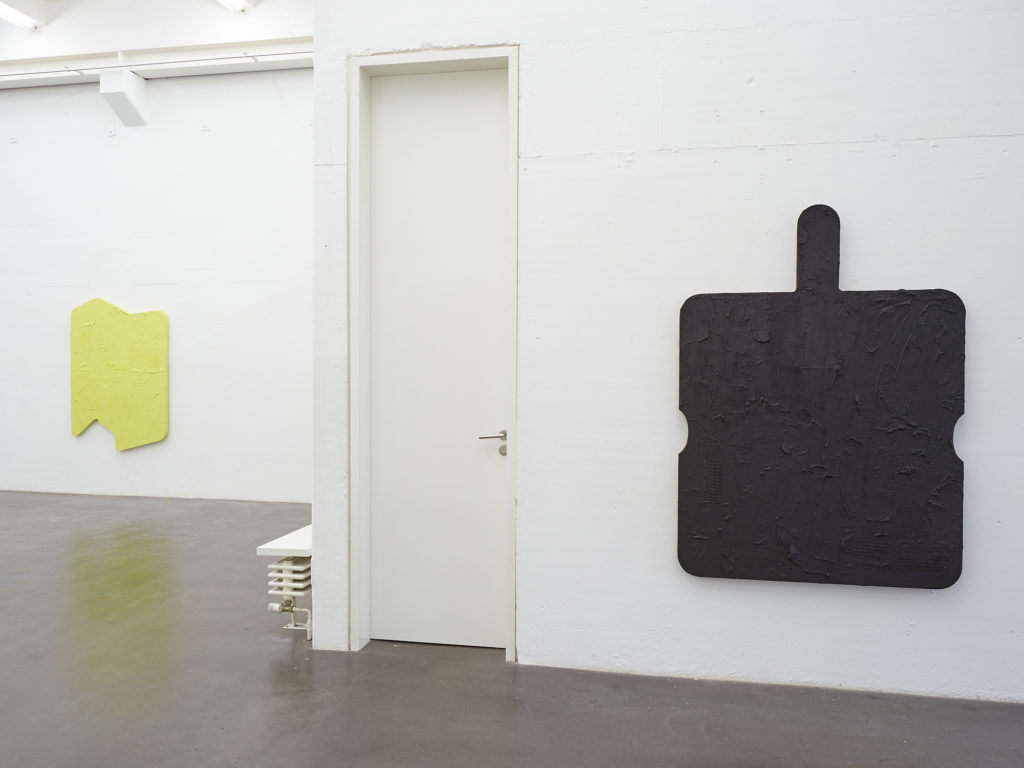
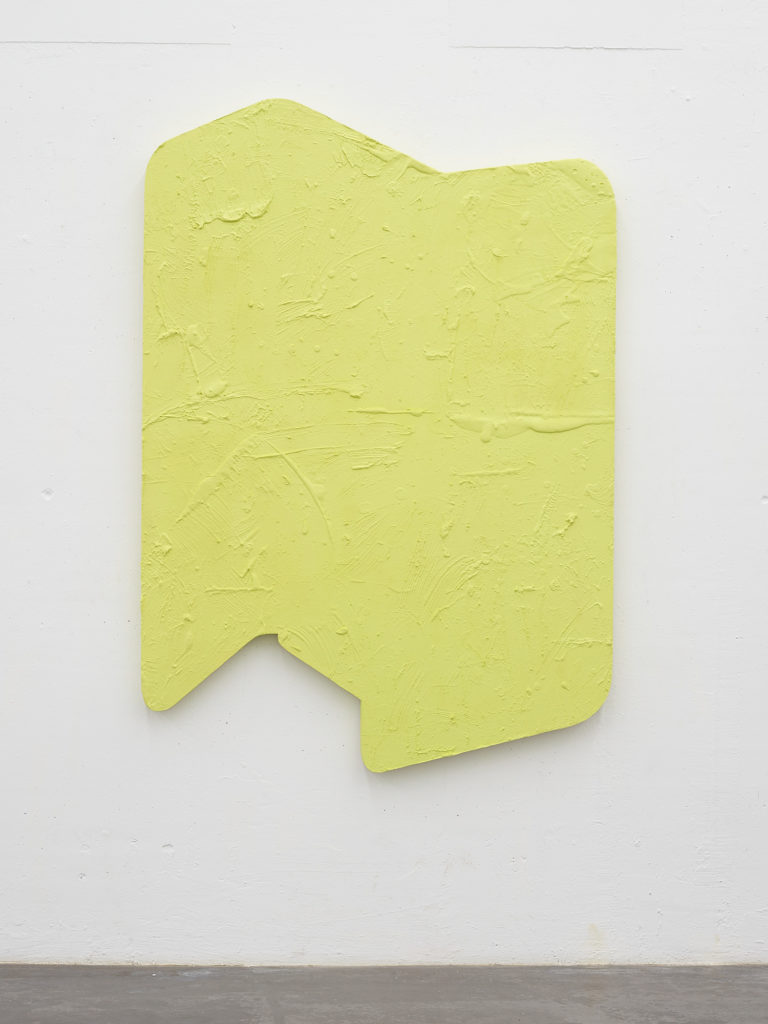

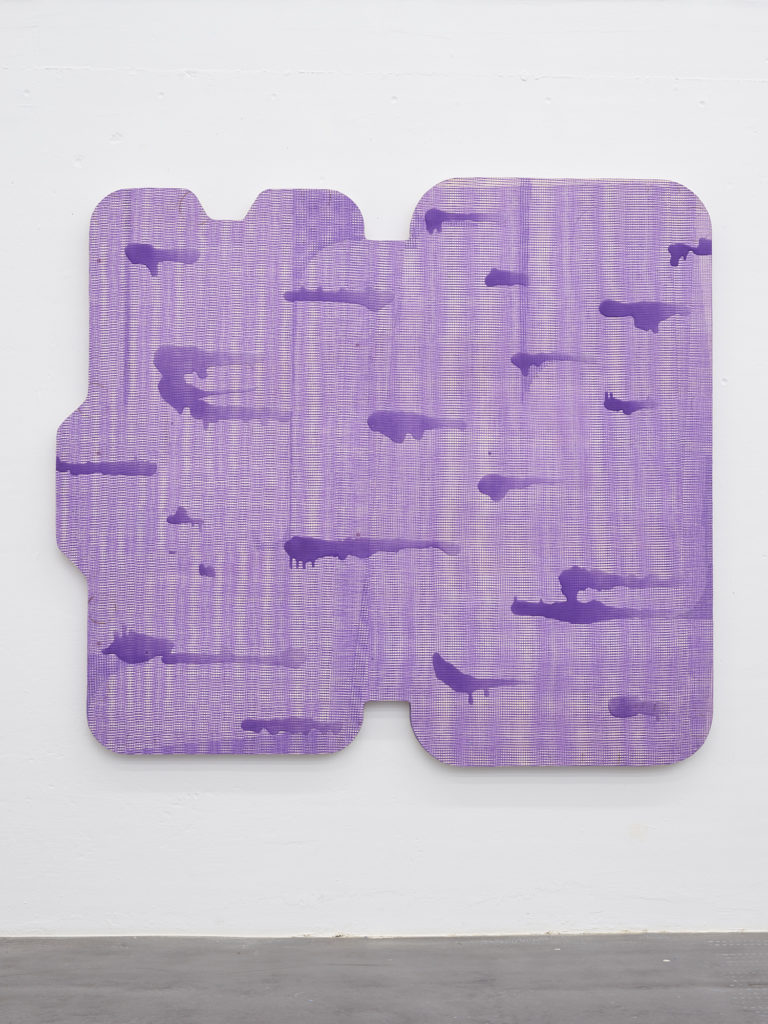
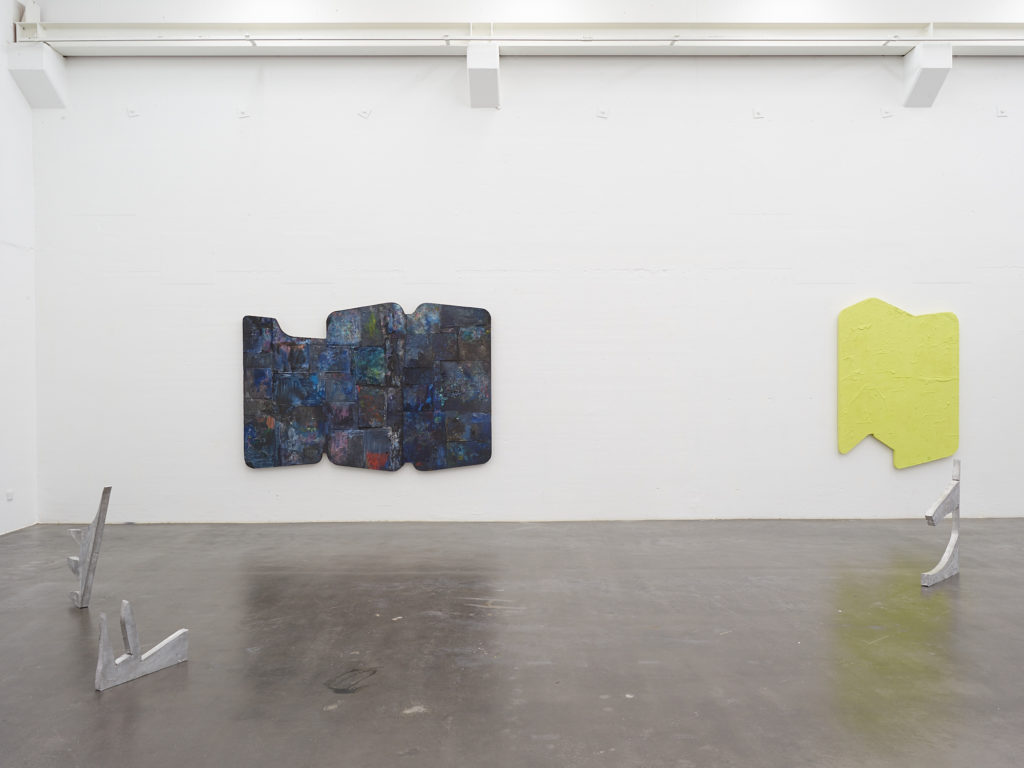
exhibition text English by Moritz Scheper (for German version scroll downwards)
What should we do with the title Roma 275? Every thought, every possible reference to the eternal city is muddled by the ostensibly random numbering, which can hardly be associated with Rome in any meaningful way. Roma 275 sounds like a designation within a family of products, a denotation as a mere unit of order, which stands in an arbitrary relationship to that which it supposedly denotes. This is interesting in several respects for Penno’s exhibition of the same name. When contemplating his new series of wall objects, their peculiar shapes immediately catch the eye. They are not – as they never are with Penno – shaped canvases. This quickly drawn terminology obscures more than it illuminates, for first of all, no canvas is used here; second, the works are hastily categorized as paintings, which they perhaps do not even strive to be; and third, and most important: since Stella, shaped canvases have transferred the assertion of an inner tension, an inner vitalism, to their outer edges in a kind of energetic model, whereas in Penno’s work it becomes a shoe. Obviously, the forms of these wall objects does not result from the surface, but rather seem to stand on their own, to come from a different context. They are probably cropped images of commercial goods, commodities, the dimensionality of which, already levelled by photography, becomes even more graphic, even flatter when reduced to the outer edges. The form as found footage now provides a surface that initially means a reduced spatial extension of an object that can no longer be reconstructed. In this respect, here, as in the product name Roma 275, an arbitrary relationship between form and surface is indicated which, in this case, however, instigates an activity that perhaps strives to fight against the unrelatedness of arbitrariness. For Penno acts out the traces of dimensionality, which play into the surface via the contours, within the surfaces, almost as if, contrary to Stella, he wanted to define the interior from the edges. Using coloured plaster, fibreglass mesh, paint-splattered linoleum or cardboard strips which serve as pallets, he builds up the surfaces, which are always reminiscent of painting supports, but consistently work against their own flatness. The permanent self-quotation of the painterly facets within his own practice – the remains of pallets, painterly markings in plaster or plays with moiré with the help of mesh – undermines any one-sided reading by suggesting that the passage from the surface into space is by all means reversible. Even more interesting, however, are the loops, which thus become visible in Penno’s works and working method: He does not exclude waste, by-products, and collateral processes, but rather feeds them back into production at later points in time. The completely splattered linoleum floor of the studio becomes a pictorial surface, while the cardboard pallets are subjected to a process of refinement. What was cut away during the creation of older works will later be returned to the exhibition space as a cast, which once again opens the theme of surface/space. In this ‘sculpturisation’ of former cut scraps of image carriers, however, it almost seems as if no frictional energy should be lost. Penno is not concerned with upcycling or sublimation per se, but always with a complicated preoccupation with indexicality beyond simple moments of derivation such as traces and imprints. In this respect, the technocratic title Roma 275 possibly stands for the problem of a disconnectedness that stands on its own, which is not based on a before and on which no after can be built.
Moritz Scheper
exhibition text German by Moritz Scheper
Was anfangen mit dem Titel „Roma 275“? Jeder Gedanke, jede mögliche Referenz auf die ewige Stadt verrätselt die scheinbar wahllos zugeordnete Nummerierung, die sich kaum sinnbringend mit Rom zusammenbringen lässt. „Roma 275“ klingt wie eine Bezeichnung innerhalb einer Produktfamilie, ein Name als reine Ordnungseinheit, die in einer arbiträren Beziehung zu dem Bezeichneten steht. Dies ist gleich in mehrfacher Hinsicht interessant für Pennos Ausstellung gleichen Namens. Schaut man sich seine neue Serie Wandobjekte an, fallen sofort ihre eigentümlichen Formen ins Auge. Es handelt sich dabei nicht, wie eigentlich nie bei Penno, um shaped canvases. Diese schnell gezückte Begrifflichkeit verunklart hier mehr als sie erhellt, denn erstens findet Leinwand hier keine Verwendung, zweitens wird so vorschnell als Malerei kategorisiert, was vielleicht gar keine sein möchte und drittens und am wichtigsten: Shaped canvases übertragen seit Stella in einer Art energetischem Modell die Behauptung einer innere Spannung, eines inneren Vitalismus auf ihre äußeren Ränder, während bei Penno umgekehrt ein Schuh draus wird. Offenbar resultiert bei diesen Wandobjekten nicht die Form aus der Fläche, vielmehr scheint sie zunächst für sich zu stehen, aus einem anderen Kontext herzurühren. Es sind wahrscheinlich freigestellte Produktabbildung von Handelsgütern, commodities, deren eh schon von der Fotografie nivellierte Dimensionalität in der Reduktion auf die Außenkanten noch grafischer, noch flacher wird. Die Form als found footage bietet nun eine Fläche an, welche zunächst einmal zurückgedrängte räumliche Ausdehnung eines Gegenstandes bedeutet, der nicht mehr zu rekonstruieren ist. Insofern deutet sich hier, wie in der Produktbezeichnung Roma 275, eine arbiträre Beziehung zwischen Form und Fläche an, die aber in diesem Fall eine Beschäftigung anregt, welche vielleicht gegen die Beziehungslosigkeit von Arbitrarität angehen möchte. Denn Penno agiert die Spuren von Dimensionalität, welche über die Randformen hineinspielen, in den Flächen aus, fast so als wolle er gegen Stella das Innere von den Rändern definieren. Mit gefärbtem Gips, Fibreglass mesh, farbbespritzen Linoleum oder als Paletten genutzen Kartonstreifen baut er die Flächen auf, welche dabei jederzeit an Malgründe erinnern, jedoch konsequent gegen die eigene Flächigkeit anarbeiten. Die permanente Selbstzitierung der malerischen Facetten innerhalb der eigenen Praxis – über die Palettenreste, malerische Setzungen im Gipsauftrag oder Moiréspielereien mit dem Mesh – hintertreibt dabei jede einseitige Lesart, indem der Gang von der Fläche in den Raum als durchaus umkehrbar angedeutet wird. Noch interessanter aber sind die Schlaufen, die dadurch in Pennos Arbeiten und Arbeitsweise sichtbar werden: Abfälle, Beiprodukte, kollaterale Prozesse schließt er nicht aus, sondern speist sie zu späteren Zeitpunkten wieder in die Produktion ein. Der vollgeklekste Studioboden aus Linoleum wird selbst Bildfläche ebenso wie die Papppaletten eine Veredelung erfahren. Was bei der Entstehung älterer Arbeiten weggeschnitten wurde kommt später als Abguss zurück in den Ausstellungsraum, wodurch einmal mehr die Thematik Fläche/Raum aufgemacht wird. Allerdings scheint es bei dieser Skulpturwerdung vormaliger Schnittreste von Bildträgern fast so, als dürfe keine Reibungsenergie verlorengehen. Dabei geht es ihm nicht um Upcycling oder Sublimierung an sich, sondern immer auch um eine vertrackte Beschäftigung mit Indexikalität über simple Herleitungsmomente wie Spuren und Abdrücke hinaus. Insofern steht der technokratische Titel „Roma 275“ eventuell für das Problem einer für sich stehenden Verbindungslosigkeit, die nicht auf einem Davor fußt und auf der auch kein Danach gebaut werden kann.
Moritz Scheper